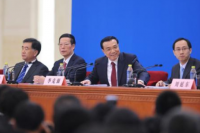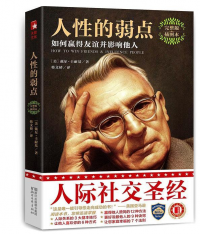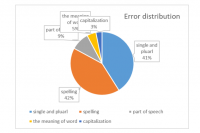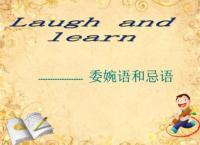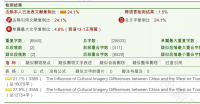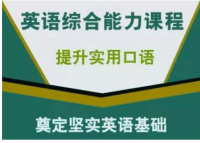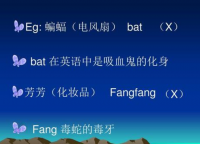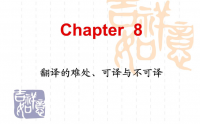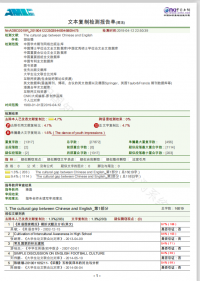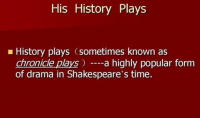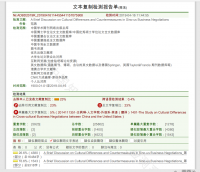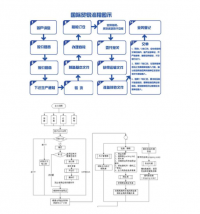论李总理的翻译策略On Translation Strategies in Premier Li
Keqiang’s Press Conference of 2016 Two Sessions Based on Skopos Theory
摘 要
中国在国际舞台上越来越活跃,国际影响不断扩大。中国的各大会议受到了国内外记者的重视,两会期间的记者招待会更是受到广泛关注。要想传神达意地传达会议内容,口译起着十分重要的作用。近年来,许多学者投身于口译研究,国家领导人的发言、政府报告等成为研究热点,而2016年李克强总理的答记者问环节的口译活动,鲜少有人研究。目的论是德国功能学派的理论核心,强调翻译是以目的为导向,翻译目的决定译者采取何种翻译策略和方法。因此,本文拟采用案例分析的研究方法,以目的论为指导,结合口译灵活性、及时性和现场性等特点,探讨2016年李克强总理两会记者问答环节的口译活动。研究发现:在词的层面,为了迎合目标语受众,使读者容易理解,译员主要运用了词性转换、意译、增译等翻译方法;在句的层面,为了更好传达原文本的信息和意义,译员主要采用了直译、语序调整和合并等翻译方法。
关键词:目的论; 会议口译; 翻译策略
Abstract
As China becomes more and more active on the international stage, its international influence is constantly expanding. Therefore, the major conferences in China have received the attention of journalists both at home and abroad, and press conferences of the two sessions have drawn a wider attention. Interpretation plays an important role in conveying the content of conferences. In recent years, many scholars have devoted themselves to interpreting studies, so statements made by state leaders and government reports have become research hotspots. This thesis takes Premier Li Keqiang’s press conference of 2016 two sessions as the research object, for this conference is studied by few people. Skopos theory is the theoretical core of the German functionalism, emphasizing that translation is purpose-oriented and the purpose of translation determines translation strategies and methods. Therefore, under the guidance of skopos theory, this paper intends to use the case study method, combining the flexibility, timeliness, and presence of interpretation to discuss the interpreting activity of Premier Li Keqiang in 2016 two sessions. The author finds that in terms of words, in order to cater to target audiences and make readers easy to understand, the interpreter mainly uses translation methods such as conversion, free translation, addition; in terms of sentences, in order to better convey the information and meaning of the source text, the interpreter mainly adopts translation methods such as literal translation, inversion and combination.
Keywords: Skopos Theory; meeting interpretation; translation strategies
Contents
摘 要 I
Abstract II
Contents III
Chapter 1 Introduction 1
Chapter 2 Literature Review 3
2.1 Previous Studies on Interpretation at Home and Abroad 3
2.1.1 Previous Studies on Interpretation at Home 3
2.1.2 Previous Studies on Interpretation Aboard 4
2.2 Domestic Studies on Interpretation of Two Sessions 4
Chapter 3 Theoretical Foundation: Skopos Theory 7
3.1 The Origin of Skopos Theory 7
3.2 Three Principles of Skopos Theory 7
3.3 Interpretation Under the Guidance of Skopos Theory 8
Chapter 4 A Probe into Strategies for Premier Li Keqiang’s Press Conference of Two Sessions in 2016 11
4.1 In Terms of Words 11
4.1.1 Conversion 11
4.1.2 Free Translation 12
4.1.3 Addition 13
4.2 In Terms of Sentences 14
4.2.1 Literal Translation 14
4.2.2 Inversion 15
4.2.3 Combination 16
Chapter 5 Conclusion 19
References 21
Acknowledgements 23
Chapter 1 Introduction
As China’s overall national strength continues to increase, major conferences have received great attention from foreign journalists, so have press conferences. One of the most prevalent press conferences is the “two sessions” which refers to “the NPC of the People’s Republic of China” and the “Chinese People’s Political Consultative Conference”. It is a speech delivered on behalf of the country, conveying the country’s response to livelihood issues.
Premier Li Keqiang, since his term of office, has made speeches on many occasions. His speech is a very pragmatic and well-organized statement of problems and goals for China’s development. From then on, Premier Li will continue to make speeches during his term of office. Therefore, studying Premier Li Keqiang’s Press Conference of Two Sessions in 2016 will help interpreters perform well and exactly convey the original meaning Premier Li intends to express.
Skopos theory is put forward by Hans J. Vermeer, a German functionalist who considers translation as an intercultural communicative activity. Skopos theory has solved the dilemmas whether to choose literal translation or free translation, dynamic equivalence or formal equivalence. It is flexible for translators to choose all sorts of translation methods in different texts.
The paper is intended to analyze Premier Li Keqiang’s Press Conference of Two Sessions in 2016 by studying some examples and try to find interpretation skills from the perspective of skopos theory, which has both theoretical and realistic significances. Theoretical significances center in enriching research fields of skopos theory and searching for theoretical supporting of interpreting. As to practical significance, the study helps interpreters have a deep understanding of interpretation methods and skills. Furthermore, misunderstandings between China and foreign countries will be eliminated.
This paper is made up of five chapters. Chapter one is about background, significance, objective and methodology, introducing brief information about this essay. Chapter two is literature review, which reviews previous studies about interpretation at home and abroad. Domestic studies on interpretation of two sessions are also included in this chapter. Chapter three demonstrates theoretical foundation: the origin of skopos theory, three principles and interpretation under the guidance of skopos theory. Chapter four does research on Premier Li Keqiang’s press conference of 2016 two sessions. Considering the characteristics of interpretation, interpretation techniques and skills applied to words and sentences are explained under the guidance of skopos theory. Chapter five is to summarize the study as well as its achievements and limitations.
Chapter 2 Literature Review
This chapter summarizes the domestic and foreign interpreting researches and previous studies on the interpretation of two sessions. Because of the limited research data of the two sessions abroad, research materials of the two sessions are at home. The writer hopes that by studying previous studies in foreign countries and China, the existing research achievements and the research gap can be got.
2.1 Previous Studies on Interpretation at Home and Abroad
Recently, interpreting research has become an active topic in the academic circle, and has drawn continuous attention of scholars. Because of different cultural backgrounds and academic traditions at home and abroad, studies on interpretation have obvious differences. According to previous researches, combing researches on interpretation at home and abroad is beneficial to the healthy development of interpretation.
2.1.1 Previous Studies on Interpretation at Home
Domestic interpretation research started in the 1980s, and most researches were about the general understanding of interpretation conducted by interpreters or teaching staff. In Summary of Interpretation Studies in Recent Years, Hu Gengshen divided interpreting researches into four categories: “theoretical research”, “skillful research”, “pedagogical research” and “introduction”, and explained the definition, characteristics, language style and so on. “It is believed that interpreting is a process of conveying the oral information from one language to another, and the fundamental purpose is to make the two parties understand each other” [1].
The booming period was from the 1990s to the present. The turning point of domestic interpretation was the fifth interpretation conference held by School of Translation of Shanghai Foreign Language University. Then there appeared new changes like: the establishment of interpreting training courses, the improved professional qualities of interpreters and the increased number of essays on interpretation studies. Since 2005, three theoretical works have been publicized one after another. First, The Volume of Interpretation Studies edited by Liu Heping, which included the domestic and foreign experts in the macro interpretation theory research, noted alternative interpretation, simultaneous interpretation, interpretation quality assessment, and so on. Second, Bao Gang’s Introduction to Interpretation Theory introduced basic methods of studying interpretation theory, analyzed differences between spoken language and oral interpretation and dissected the procedures of listening, recognition, memory and notes. Third, Yang Chengshu’s Interpretation Teaching Research: Theory and Practice was composed of two parts: application of foreign language and professional interpretation. The former focused on the teaching of interpreting course and the later took professional teaching of masters as the main research object.
In the CNKI, from 2004-2016, studies about interpretation can mainly be listed as follows: interpretation process, interpretation teaching, interpreters, interpretation theory, interpretation products and interpretation practice and occupation. The top three heatedly-discussed topics on interpretation are the interpretation process, interpretation teaching and interpretation practice and occupation. Accordingly, it can be seen that the number of papers on domestic interpretation has increased substantially, and research fields are becoming increasingly diverse. However, it should be noted that these previous researches are conservative as they tend to introduce and draw on foreign achievements and lack innovation.
2.1.2 Previous Studies on Interpretation Aboard
Interpretation research in the west began in the 1950s, and after 50 years, formed a relatively mature research system. From the 1950s to the 1970s, a German scholar Alfred Hermann published The Contributions to the History of Interpreting in 1956, focusing on western ancient and medieval interpretation and their historical significance, producing tremendous influence. As to conference interpretation, the representative work is The Origins of Simultaneous Interpretation: The Nuremberg Trial written by Francesca Gaiba. At that time most people were engaged in studying interpretation activities, and characteristics and techniques of interpretation were achieved from their own experiences.
From the 1980s till now, interpretation in the west has been booming. Studies on interpreting are not limited to conclusions of interpreting experience, constantly emerging new interpretation theories and perspectives. Among them, Seleskovitch and Lederer created interpretive theory, which was the first interpretation theory in the world and exerted a great impact on interpretation. And the two co-authored Interpretation Training Guide demonstrated a detailed translation method that to capture the meaning of words, interpretation is to turn the speaker’s thoughts into own thoughts, then to re-express this thought with target language, abiding by the language rules of interpreting.
A major interpretation meeting held by the University of Liberia in 1986 was a turning point which marked the end of the isolation in interpreting studies. Since then, forms of interpreting were diversified, such as court interpreting and telephone interpreting. Still and all, up till now, interpreting activities have been closely related to the development of technology. Advanced technology has promoted studies of interpretation. Moser Mercer, an active advocate of remote technology, wrote a large number of studies on remote interpretation tests in Remote Interpreting: Issues of Multi-sensory Integration in a Multilingual Task. The report emphasized that interpreters must have adaptive expertise to deal with the new need for interpreting capabilities in the future of technological development. What’s more, the number of researches on interpreters remains high. One of the famous scholars, Pym, has proposed that “The study of translation history should take the translator as the core”[2]. His book Methods in Translation History explores translators’ behaviors in different cultural and historical contexts, focusing on translators and their historical contributions.
In general, interpreting theories in the west have been continuously updated, closely linked with the development of technology and pushed interpretation from “socialization”. It is worth noting that interpreting researches in the west have been interpreter-centered. As a whole, it breaks through studies of simple practical experience or interpreting skills, and deepens the understanding of the essence and features of interpretation.
2.2 Domestic Studies on Interpretation of Two Sessions
Studies on China’s two sessions rose from 2008. As the influence of the two sessions in our country grew larger, the number of research papers has gradually increased, and the related theories have become more diverse. For example, Studies on Interpretations of Press Conferences of Two Sessions Based on Interpretive Theory written by Wang Ruiji took Premier Wen Jiabao’s answers to Chinese and foreign press questions from 2009 to 2011 as the research object. Wang summarized some interpretation skills: simplifying implication, semantic interpretation, structural reorganization and cultural turn, etc. Wang explained these skills by exemplification which was persuasive. Yang Yaping in the thesis Adaptation Theory in the Application of Alternate Interpretation between Chinese and English - 2015 Press Conference of Premier Li Keqiang as an Example used the adaptation theory as the guidance, discussing principles of adaptation theory adopted in interpreting activities.
Studying from the linguistic perspective is another direction. For example, Long Haiyan, the author of Interpretation Strategy of Ambiguous Language in Premier Wen Jiaba’s Press Conference, studied vague language from the perspective of linguistics, applied the theory to analyze examples, discussed pragmatic functions and summed up a good many interpreting strategies.
According to statistics, theories more widely applied to guide the practical interpretation were interpretive theory, functional equivalence theory, skopos theory and adaptation theory. Under the guidance of these theories, most studies emphasized culturally loaded words, words with Chinese characteristics and strategies and skills of conference interpretation. In conclusion, at home, conference interpretation has been paid more attention, and theories applied in interpreting are more diversified.
Chapter 3 Theoretical Foundation: Skopos Theory
This chapter is the theoretical framework, and the core of the theoretical framework is the proposition of skopos theory as well as three principles. “Skopos theory bridges the gap between theory and practice, breaks the shackles of equivalence theory and makes translation theory further developed”[3]. Since Hans J. Vermeer came up with the theory, skopos theory has found broad applications. Therefore, this chapter only studies and expounds the theory put forward by Vermeer.
3.1 The Origin of Skopos Theory
Before the emergence of functional translation theory, many translation theories were studied from the view of linguistics. Later, some scholars gradually came to realize that the equivalence theory was out of practice and hindered the development of translation, feeling dissatisfied. In 1971, Katharina Reiss proposed one idea about the type of function in Possibility and Limitations of Translation Criticism which can be considered as the basis of functional translation theory. “Based on the equivalence theory, Reiss established a translation criticism model based on the functional relationship between the source text and the target text”[4]. Reiss believed that the ideal translation is that “the source text and the target text in ideological content, language forms and communicative functions achieve equivalence”[5]. Reiss asserted that when it comes to how to judge the pros and cons of the translation, translation critics should rely on the criteria whether the translation has achieved a certain function or not. However, Reiss did not get rid of the limitations of equivalence theory.
As Reiss’s student, Hans J. Vermeer proposed skopos theory based on Reiss’s view. Translation was not a process that merely transfers one word to another. Translation involved the target audiences, source language, target language and different cultural elements, considering translation as a cross-cultural communicative activity. In his opinion, a behavior can lead to a result, a new situation or event, or it may be a new one. “Purpose” dominated all translation activities, and the original text was only to provide information, so translators should pay attention to receivers in target language. The emergence of skopos theory has solved dilemmas between literal translation and free translation, dynamic equivalence and formal equivalence, and different purposes determine what translation methods the translators should use.
3.2 Three Principles of Skopos Theory
The three principles are the skopos rule, the coherence rule and the fidelity rule.
First of all, the most important is the skopos rule, which is to determine translation strategies and techniques used in the translation. Vermeer puts forward that “translation, interpretation, reading, and writing all follow a certain approach that allows texts and translations to operate in their context of use, to those who want to use texts and translations, and to follow exactly what they hope”[6]. The purpose of translation is not unique and specific, but plural, relevant and optional. This purpose refers to (1) the intended purpose of the target text; (2) the intended purpose of the particular translation strategies or techniques; (3) the communicative purpose of the translator or initiator.
The intended purpose of the target text can mean that in the target language environment, the target text will make readers understand one truth or just entertain readers; the specific purpose of a translation strategies or techniques may be to convey the values of the source language texts by adopting the means of free translation. That is to say, target readers can understand what the source text wants to express in the target text. The purpose of translators or initiators is to earn profits or spread the culture. A variety of purposes are intertwined, so translators need to choose translation methods according to different contexts.
The second principle is the coherence rule, also known as “intratextual coherence”. Although the translator can choose different translation methods according to different purposes, the translator should create a text that is meaningful to target audiences, that is, the target text is in accordance with target audiences’ cultural and communicative environment. As a result, what the source text meant to convey can be understood by target audiences. Only in this way can cross-cultural communication be successful. Therefore, the coherence rule emphasizes the relationship between the target text and target audiences.
The third principle is the fidelity rule, also called intertaxtual coherence, which is used to explain the relationship between the target text and source text. Translation is to reflect the information provided by people in the source language, and the target text can maintain the original function in source text. The principle is to allow the translator to imitate the source text as much as possible, which depends on the translator’s understanding of the source text and the purpose of the translation.
The importance of these three principles is divisible. The skopos rule is prominent, and the other two principles are subordinate to it. The fidelity rule is subordinate to the coherence rule.
3.3 Interpretation Under the Guidance of Skopos Theory
It is feasible to analyze interpretation from the perspective of skopos theory, which can be explained as follows.
Firstly, skopos theory is practical and flexible, which is more applicable to non-literary texts, and press conferences essentially belong to the applicative text. “Skopos theory is more practical and practical stylistic text generally has a realistic purpose. Purpose and function is the basis for practical stylistic translation, and the core of skopos theory is also purpose and function”[7], which provides a basis for skopos theory to guide interpretation.
Secondly, compared with traditional translation theories, skopos theory does not rely too much on the source text and get rid of restrictions of equivalent theory. Press conferences are communicative, emphasizing the interpreter’s subjective initiative. If the equivalent theory is adapted, the interpretation will not be able to achieve intercultural communication. Skopos theory enables the interpreter to choose different methods, providing ample room for the interpreter to play his role. So, skopos theory is very suitable and can help the interpreter achieve the ultimate goal of interpreting.
Finally, it is impossible that the source language and the target language are fully equal in the interpretation process. Therefore, letting target audiences understand the meaning of the spokesman is the top task of the interpreter, which is a good illustration of skopos theory. National press conferences are rigorous and serious. The interpreter should treat the interpreting activity with strict attitude and not ignore the coherence of language and the spokesman’s inherent meaning in order to realize cross-cultural communication. Therefore, the coherence rule and the fidelity rule should not be neglected. In addition, a large number of papers published in CNKI have also proved that it is viable that skopos theory can guide the interpretation of press conferences.
Chapter 4 A Probe into Strategies for Premier Li Keqiang’s Press Conference of Two Sessions in 2016
This chapter takes the press conference of two sessions of Premier Li Keqiang in 2016 as the corpus, guided by three principles of skopos theory, and analyzes some interpreting strategies. Many scholars have done researches on interpreting strategies and techniques, and this chapter focuses on the interpretation of words and sentences in Premier Li Keqiang’s Press Conference of Two Sessions in 2016.
4.1 In Terms of Words
Words are the smallest constituent units of sentences. The vocabulary used in official press conference involves politics, economy and military. It requires the interpreter to use words accurately and avoid sensitive words in order to avoid some unnecessary disputes. In the limited time, as for how to interpret words accurately, the following sections analyze the strategies used to translate words.
4.1.1 Conversion
“Conversion refers that, in order to make the translation be in line with the expression, methods and habits of target language, words, sentence patterns and tense need to be conversed in the source target”[8]. And different from translation which demands “fidelity, fluency, elegance”, “interpreting standards generally emphasize accurate, smooth and quick” [9]which is “准、顺、快” in Chinese. “Accurate” means that the meaning of the spokesman conveyed by the interpreter should be accurate. “Smooth” is that the interpreter, in order to maintain fluency, could change the structure. “Quick” is a top standard because conference interpreting is either simultaneous interpretation, or alternative interpretation.
Example 1
Li Keqiang: 其中包括研发等高技术领域,这也带动了传统动能的改造。
Interpreter: Among them, there is high-tech research development, which is giving a push to the upgrade of traditional industries. (verb→noun)
In English, using a noun phrase is more formal than expressing it directly with a verb. Here, Prime Minister Li Keqiang wants to emphasize the leading role of high-tech in the traditional field. According to the skopos rule, in order to make “带动” more in line with western expression, the interpreter adopts the method of conversion to translate verbs in Chinese into noun structure in English, being more formal and achieving the purpose of emphasizing.
Example 2
Li Keqiang: 中美深化合作不仅有利于中美两国,也有利于世界。
Interpreter: Broader cooperation serves the interests of both countries and the world.
(verb→adjective)
In this sentence, there are two verbs in Chinese, but in English, the grammar allows one verb in a sentence. Under the guidance of the coherence rule, in order to correspond with English grammar and the interpreting principles of “smooth” and “quick”, the interpreter chooses conversion, turning the verb “深化” into the adjective “broader” .
Example 3
Li Keqiang: 结果激发了很大的群众创业热情。
Interpreter: All these have tremendously unleashed the creativity and entrepreneurial enthusiasm of our people. (adjective→adverb)
According to the skopos rule, to imply the effectiveness of the policy, conversion is used to point strength. Besides, this sentence can be understood by foreign people, achieving interpreting requirements of “accurate” and “smooth”.
4.1.2 Free Translation
Free translation means that when the content to be interpreted does not conform to the expression in the target language, the deep meaning of the source text is interpreted according to the expression in the target language. The purpose of free translation is to express the deep meaning and make the translation easier and more understandable. What’s more, in interpreting activities, when interpreting words with Chinese characteristics, in many cases, the interpreter uses free translation, because interpreting, as a kind of instantaneous bilingual activity, is time-limited and stressful. When the interpreter faces difficulties, free translation does not only save time, but also ensure smooth interpretation process.
Example 4
Li Keqiang: 总之,还是要瞪大眼睛,练就一双加强监管的“火眼金睛”。
Interpreter: Basically, we must sharpen our vision to exercise the most-effective regulation.
In this sentence, the four-word idiom originally refers to the eyes of the Monkey King in Journey to the West that can identify the devil ghost, and later the phrase is to describe people’s keen eyesight which is able to identify the authenticity. Premier Li uses “火眼金睛” to claim carefulness to financial latent risks and moral hazards. Because of different cultures, if the idiom is interpreted literally, target audiences cannot understand what Premier Li means. According to the coherence rule, to confirm to the expression of target audiences, the interpreter employs free translation, and “火眼金睛” is interpreted into “sharpen our vision” which changes nonobjective concept into concrete meaning. The advantages are ensuring smooth interpretation activity and successfully expressing the meaning of Premier Li.
Example 5
Li Keqiang: 中美建交几十年了,经历了多少风风雨雨,但是中美关系向前发展是大趋势。
Interpreter: It has been several decades since the two countries established diplomatic relations, and the relationship has seen more than a fair share of ups and downs, but it has been always moving forward, which I believe is the underlying trend.
“风风雨雨” means the constant wind and rain, whose extended meaning is obstacles. “风风雨雨” can be interpreted into “winds and rains” literally. However, Premier Li wants to strengthen the bright future. Based on the skopos rule, to make target audiences get the hidden meaning, free translation is applied. “Ups and downs” vividly shows the variation between two countries and hints the strong relationships.
Example 6
Li Keqiang: 再加上背水一战的意志,就可以顶住经济下行的压力。
Interpreter: With that momentum and our firm determination, we will be able to withstand the downward economic pressure.
“背水一战” has the extended the meaning—in desperation, in order to find a way out of a deadly fight, showing one’s determination. Premier Li wants to convey governments’ resolution, creating an atmosphere that all Chinese people have made their mind up to fight against decreasing economy. According to the skopos rule, in order to show determination, free translation is a good choice. “Firm” shows the meaning and save time.
4.1.3 Addition
Addition can be explained that it is to add some components in one sentence to increase information content. The interpreter adds parts that he deems relevant to the source text and presents new content in his own way, such as introducing the necessary background information or supplementing the original message, so that target audiences can better understand. Besides, interpretation is on-the-spot. Addition is used for more thinking time, ensuring audiences to better understand.
Example 7
Li Keqiang: 当然金融也有其自身的规律,要防范风险。
Interpreter: The financial sector also operates according to its own laws, and one should always look out for possible financial risks. (add subject)
In Chinese, sometimes the logical subject can be omitted. Here, the subject is finance, but finance cannot prevent risks on its own. If the subject is not added, target audiences will feel confused. According to the skopos rule, in order to make the whole sentence more in line with the grammar of the target language and let audiences understand, the interpreter chooses addition to make the whole sentence more fluent and logical.
Example 8
Li Keqiang: 有关方面采取综合性稳定市场的举措,实际上是要防范发生系统性的金融风险,这一点是做到了的。
Interpreter: Public departments took coordinated steps to stabilize the market and prevent any sustainable financial risk, and our measure achieved the desired result.
(add attribute)
Strictly speaking, press conference interpretation is a type of foreign-language translation that is both political and time-sensitive. Slight mistakes can affect a country’s image and reputation. In this sentence, Prime Li suggests that China makes efforts on preventing financial risk which has been gotten. According to the skopos rule, wanting to make the statement precise, the interpreter adds the attribute, indicating that the requirements to be achieved in reforms have been fulfilled.
Example 9
Li Keqiang: 传统动能发展到一定阶段出现减弱是规律,很多国家都走过这样的路,是发达国家。
Interpreter: When development has come to a certain stage, it is only natural for traditional growth drivers to begin to wane, and that has happened in many developed countries. (add adjective)
Premier Li Keqiang intends to express that the decline of traditional industries is not worth being worried. According to the skopos rule, in order that the meaning of the target language more closely matches that of the source language, “natural” is added.
Example 10
Li Keqiang: 因为大家来自诸多方面,实在是没有时间一一回答了,顾此就会失彼,希望明年再见。
Interpreter: There are so many issues that need to be covered, but our time is limited. So regrettably we may have to leave something out, but hopefully we will meet up again next year. (add adverb)
In the end of the conference, due to the limitation of time, Premier Li suggests his regret that he cannot answer all questions. As known, Chinese is reserved, while English is direct. Therefore, according to the coherence rule, to represent the politeness of China and agree with the custom, the interpreter adds adverb “regrettably” to his hidden feeling.
4.2 In Terms of Sentences
Sentences, made up of words and phrases, are the basic unit of language use which can express the meaning completely. Compared to Chinese, the structure of English is apparently different from that. In order to express information clearly, the interpreter needs to choose different strategies to interpret sentences. The following content is to study what strategies have been employed in details.
4.2.1 Literal Translation
Literal translation refers that the meaning and structure of the source text can be interpreted into target language, and the target text can be expressed as the same way as the source text to reflect the same content. Literal translation is often the most straightforward and convenient method. And interpretation requires that the interpreter can accurately turn information in one language into the other language and keep communication flowing smoothly. Besides, the tight atmosphere also prevents the interpreter from thinking about the most perfect translation technique.
Example 11
Li Keqiang: 我们还是要坚定不移地发展多层次的资本市场,而且也可以通过市场化债转股的方式来逐步降低企业的杠杆率。
Interpreter: We’re determined to press ahead with the building of a multi-tiered capital market, and we can also use such a market-oriented format for equity swaps to help bring down the corporate leverage ratio.
This sentence is a long sentence, and the interpreter needs to accurately express this sentence in a limited time. Based on the fidelity rule, in order to enable the interpreter to express correctly and not to affect the progress, the interpreter uses literal translation.
Example 12
Li Keqiang: 中美两国之间有广泛的共同利益,当然也存在着分歧,有的还是比较尖锐的,这毋庸讳言。
Interpreter: There are broad interests between China and the United States. There are also some differences between the two countries, and some differences could be quite sharp. There is no need to deny this.
Four short sentences consist of the long sentence whose structure is loose. According to the skopos rule, in order to save time and make target audiences understood, literal translation is concise by using the structure of “there be”.
Example 13
Li Keqiang: 简政放权可以说是转变政府职能的关键。
Interpreter: Streamlining administration and delegating powers holds the key to transforming governments’ functions.
It is a short sentence, and literal translation can be used directly. Under the fidelity rule, literal translation can directly express the meaning of the Prime Minister. Using gerund noun as subject is not only symmetrical to the structure of source language, but also save time.
4.2.2 Inversion
Inversion refers to the order in which components of a sentence are rearranged. It reflects the relationship between a word and a sentence component and the logical thinking of the interpreter. And “The principle of interpretation should be consistent with the characteristics of language social function: accuracy, conformity and cultural fit” [10].
Example 14
Li Keqiang: 我们对中国经济长期向好充满信心,这种信心并不是凭空的,因为我们坚信只要坚持改革开放,中国的经济就不会“硬着陆”。
Interpreter: We are fully confident about China’s long-term growth prospects. This confidence is not groundless, because we believe that there will not be a hard landing as long as we stick to the reform path.
English tends to place the important information at the beginning of the sentence. According to the coherence rule, in order to be in line with the English expression mode and meet the purpose of cross-cultural communication, the interpreter chooses inversion, adjusting the place of adverbial.
Example 15
Li Keqiang: 由于我们高度重视保护职工的合法权益,保证了大量的职工转岗或得到妥善安置,可以说积累了经验。
Interpreter: With a high priority given to protecting the interests of employees, we have taken strong steps to resettle these people and give them re-employment opportunities, and good experience have been enjoyed from the process.
The tense of Chinese is more active, while English is more passive. And there are similarities and differences in the thinking modes between English and Chinese. Based on the coherence rule, in order to cater to the thinking mode of English-speaking audiences, inversion is adopted, taking the object as the subject.
Example 16
Li Keqiang: 维护地区的稳定,实现睦邻友好,关键还是要靠地区国家共同努力。
Interpreter: It is up to the efforts of regional countries to maintain regional stability and harmony in the neighborhood.
In this sentence, what Premier Li stresses is the importance of regional countries, but English tends to place the important information in the front. Besides, “Interpreting is a service activity with a communication function. It is usually a face-to-face communicative act”[11]. Guided by the coherence rule, to achieve communication, the interpreter accepts inversion.
4.2.3 Combination
“Chinese language is loosely structured, and words with the same meaning appear in one sentence many times. However, English is rigorously structured, so the use of long sentences can meet the requirement”[12]. Therefore, combination, which is to turn some short sentences into a long sentence, is often employed. Moreover, the process of interpretation should be short, and the pace should be tight. Combination is consistent with the characteristics of interpreting activities.
Example 17
Li Keqiang: 不过你让我同意说中国经济完不成已经确定的主要经济目标,那是不可能的。
Interpreter: But it is impossible for me to agree that China cannot achieve the growth target this year.
In this sentence, “不可能” refers to “中国经济完不成已经确定的主要经济目标”. If the two sentences are interpreted respectively, they cannot represent the tight pace of the interpreting activity. Under the guidance of the coherence rule, the interpreter applies combination, using the subject clause to lead the whole sentence. This action is not only accord with the language structure of the target language, but also save time.
Example18:
Li Keqiang: 这跟我们下去调研的一些感受是类似的,实质上它说明了中国经济是困难和希望并存。
Interpreter: This is in line with my last year’s field trip conclusion: hope and challenges coexist.
In this sentence, “感受” refers to “困难和希望”. “Hope and challenges” is to avoid repetition. Based on the skopos rule, in order to make the sentence brief, it is correct to employ combination which makes the structure tight.
Example 19
Li Keqiang: 但是不管花落谁家,最后谁当总统,我相信中美关系向前发展的大势不会改变。
Interpreter: I believe that no matter, in the end, who gets into the White House, the underlying trend of China-US ties will not change.
“花落谁家” has the same meaning with “最后谁当总统”. If “花落谁家” is interpreted as “who will win the laurel”, and “最后谁当总统” as “who will become the president”, this sentence will become too long, taking much previous time. According to the skopos rule, in order to avoid being verbose, the interpreter adopts combination, conveying a short but comprehensive message to target audiences.
Example 20
Li Keqiang: 由于朝鲜采取的一系列举动,美国正在加强在韩国的军事部署。
Interpreter: Actions of the Democratic People’s Republic of Korea have got the United States to increase its military presence in the Republic of Korea.
In this sentence, actions of USA results from what the Democratic People’s Republic of Korea have done. Based on the skopos rule, in order to stress the causality, combination is employed, demonstrating a logical relation. What’s more, the present pressure pushes the interpreter to choose combination.
Chapter 5 Conclusion
This paper, guided by Vermeer’s skopos theory, analyzes some interpreting strategies used in the interpreting activity of Premier Li’s press conference of 2016 two sessions. After the detailed analysis, it can be found that skopos theory can guide interpretation at press conferences and six interpreting strategies are applied. In the term of words, the interpreter uses conversion, free translation and addition; in the term of sentences, the interpreter employs literal translation, inversion and combination. According to skopos theory, interpreting strategies that the interpreter consider are not only to express China’s voice, but to achieve cross-cultural communication, conforming to three principles. What’s more, to ensure the smooth interpretation process, the interpreter keeps interpreting principles in his mind. So under the guidance of skopos theory, this interpreting activity is successful.
The paper takes Premier Li Keqiang’s Press Conference of Two Sessions in 2016 as the research object, analyzing six interpreting strategies and skills in terms of words and sentences. On the one hand, theoretically speaking, applying the skopos theory to interpretation, the paper enlarges research fields of skopos theory and provides theoretical support for interpreting. On the other hand, for practical significance, based on the method of case study, the study helps interpreters have a clear understanding on how to use interpretation methods and skills.
However, this paper is an attempt based on previous researches. There are still some limitations. First of all, due to the lack of ability of the writer, only a small amount of interpretation skills have been studied during the case analysis. Some other skills are not included. Future studies are suggested to do deep researches on translation strategies and skills. Second, interpreters and listeners are influenced by some other subtle factors, and the writer does not experience the interpreting activity in person and cannot fully grasp the details. Therefore, the writer fails to find a more suitable solution when facing some urgent situations. In order to keep a healthy development on interpretation, in future studies, it is necessary to take part in interpreting activities.
References
[1]胡庚申. 近年我国口译研究综述[J]. 外语研究与教学, 1990, (4): 1-5.
[2]PYM A. Methods in translation history[M]. Beijing: Foreign Language Teaching and Research Press, 2007: 5.
[3]杰里米?芒迪著. 李德凤等译. 翻译学导论:理论与应用[M]. 北京: 外语教学与研究出版社, 2014: 49-51.
[4]汉斯?弗米尔. 译有所为[M]. 张美芳, 王克非译. 北京: 外语教学与研究出版社, 2005: 11.
[5]NORD C. Translating as a purposeful activity: functional approaches explained[M]. Shanghai: Shanghai Foreign Language Education Press, 2001, 10-11.
[6]Vermeer H. Framework for a general theory of translation[M]. Heidelberg: Heidelberg University Press, 1978, 45.
[7]方梦之, 毛忠明. 应用翻译教程[M]. 上海: 上海外语教育出版社, 2005: 11.
[8]江小梅. 英汉交替传译教程[M]. 武汉: 武汉大学出版社, 2009: 56.
[9]王斌华. 口译: 理论?技巧?实践[M]. 武汉: 武汉大学出版社, 2006: 94.
[10]李洁. 论记者招待会的口译策略[J]. 洛阳理工学院学报, 2010, 25(1): 18-20.
[11]GILE D. Basic concepts and models for interpreter and translator training[M]. Amsterdam: John Benjamin’s Publishing Co., 1995: 78.
[12]董晓波. 翻译概论[M]. 北京: 对外经济贸易大学出版社, 2012: 25.
Acknowledgements
After continuous revision, this paper has been completed. During this period, many people give me a hand. First of all, I would like to thank my mentor, Huang Weiwei. This paper has received her patient guidance from the topics, outline, revision and finalization. She has provided me with many effective suggestions. Her serious work attitude and rich knowledge are what I admire.
Secondly, I want to thank teachers who helped and taught me in these four years. They impart me professional knowledge and practice my practical ability, which helps develop my ability in an all-round way. Besides, classmates help each other and share experiences, creating a friendly environment to me.
Finally, I want to express my gratitude to my family who silently support me when I am in trouble and urge me not to give up.



